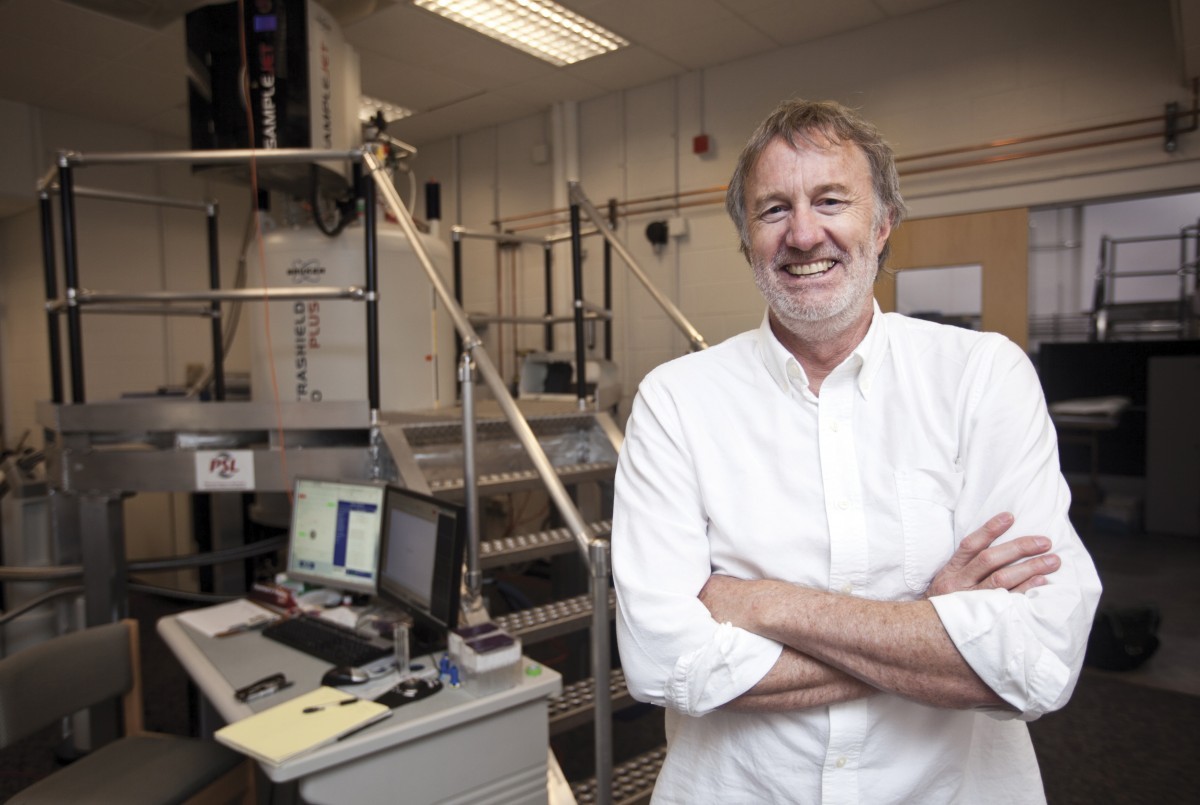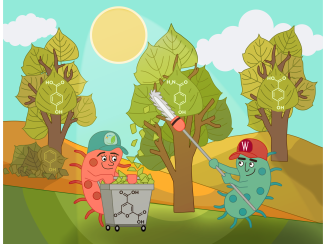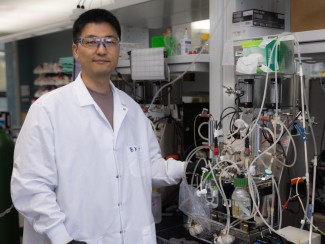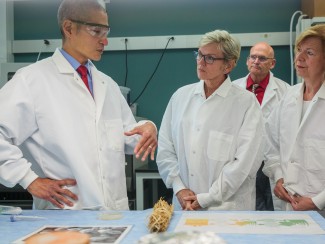
Lignin makes up about a quarter of plant biomass and is the most abundant source of renewable aromatics on Earth. Aromatics are materials with six carbon rings usually derived from petroleum that are the building blocks for a wide array from products - from plastics to pharmaceuticals.
Despite its high energy density, researchers have struggled to find ways to realize lignin’s value, but if harnessed, this naturally-occurring substance could transform agricultural markets for the better.
In research published today in Science Advances, scientists at the University of Wisconsin–Madison and Great Lakes Bioenergy Research Center (GLBRC) with partners at the Center for Bioenergy Innovation (CBI) have shown that a recently-discovered variety of the substance, catechyl lignin (C-lignin), has attributes that could make it well-suited as the starting point for a range of bioproducts.
An ideal lignin
GLBRC researcher John Ralph, a UW–Madison professor of biochemistry and biological systems engineering, examined the substance’s chief characteristics in collaboration with CBI’s Richard Dixon, University of North Texas distinguished research professor of biochemistry and molecular biology, who found the substance in the seeds of an office cactus. Ralph’s lab revealed a linear and homogeneous nature to the substance, uncommon traits for lignin.

the Ralph lab, uncovered unusual
traits of C-lignin.
Through further examination, Yanding Li, a UW–Madison biological systems engineering graduate student in the Ralph lab, was able to determine that C-lignin, also found in vanilla seed coatings, represents an ideal lignin for a bioenergy refinery.
The two groups together detected that the substance is made up of only one type of monomer, or lignin molecule. Additionally, each monomer is held together in the same way. Li and Ralph reasoned that it could therefore be refined into a single platform molecule, or a small array of such molecules, that can build a variety of products. Li also uncovered a particularly favorable trait – C-lignin doesn’t lose its form when chemically pretreated.
Lignin often contains several kinds of monomers and becomes malformed when processed, making it a difficult puzzle to solve for academic researchers and their industrial counterparts. Paper factories, for example, often burn it to fuel the operation and for electricity generation rather than attempt to convert lignin into commercial bioproducts.
The sample that Li analyzed was comprised solely of C-lignin – a promising material because its uniformity allows for easier processing.
“Biofuel refineries like to use a ‘pure’ compound rather than a mixture of several,” says Li. “The less complicated our product is, the more value it has.”
Because C-lignin monomers are held together by only one kind of bond, called “ether linkages”, they can be cleaved cleanly into their basic monomers with the right chemical treatment. These building blocks can then be transformed in different ways depending on the desired output.
“The regular and linear nature of this lignin combined with the relatively simple chemistry to depolymerize it, makes producing high yields of simple monomers fairly straightforward,” says Ralph.
A resilient material
When plants are refined into biofuels and bioproducts, the lignin first gets stripped away, leaving cellulose and hemicellulose – easily manipulated sugars – to be converted into marketable materials. This rigmarole of pretreatment usually causes lignin to ball up into a tangled mess.
The bigger thing was to realize a new paradigm, a new lignin ideotype, and a new way of thinking about the perfect lignin for a biorefinery.
John Ralph
C-lignin’s structure, however, survives even the harshest pretreatment methods and doesn’t get twisted.
“Even the weakest of acid or alkali treatments destroys other lignin, but every time I checked the C-Lignin after a reaction, it was almost entirely intact,” says Li. “We can then create a good quality monomer in high yield for use as a platform chemical.”
Old technique, new results
Ralph and Li proceeded to expose C-lignin to hydrogenolysis, a technique for deconstructing lignin developed at UW–Madison in 1938 by chemistry pioneer Homer Adkins.
The duo suspected hydrogenolysis would be able to cleave the ether bonds that hold C-lignin monomers together. In this case, the approach produced a simple pair of monomers in roughly 90% yield. Choosing the right catalyst could narrow it down to a single monomer– a striking result for a plant component oft-maligned for its obstinance.
From identification to products
Isolating the genetic code that makes C-lignin so well-suited for production, the Ralph team and collaborators at CBI are working to insert such lignins into bioenergy crops that can be cultivated on a larger scale.
They now also have a model for what makes a good lignin for biorefineries. For lignin to be viable as a product building block, it has to:
be made from just one type of lignin monomer;
contain only the kinds of bonds that can be broken cleanly; and
withstand the harsh conditions of pretreatment.
The team now has a vital blueprint for making use of a large part of plants that is used to being shoveled into an incinerator.
“Yanding took a step back and said, ‘what more can we do with this?’”, says Ralph. “The bigger thing was to realize a new paradigm, a new lignin ideotype, and a new way of thinking about the perfect lignin for a biorefinery.”
GLBRC is one of four U.S. Department of Energy Bioenergy Research Centers created to provide scientific breakthroughs for a new generation of sustainable, cost-effective biofuels and bioproducts. For more information on GLBRC, visit www.glbrc.org or visit us on twitter.





